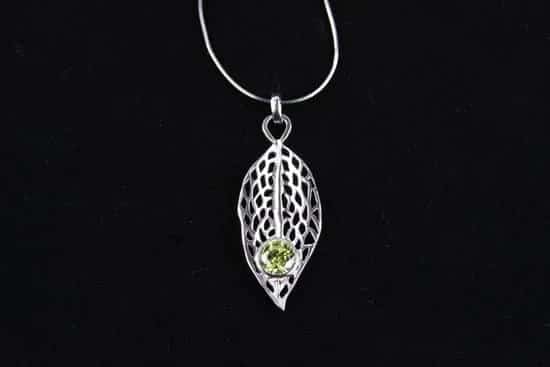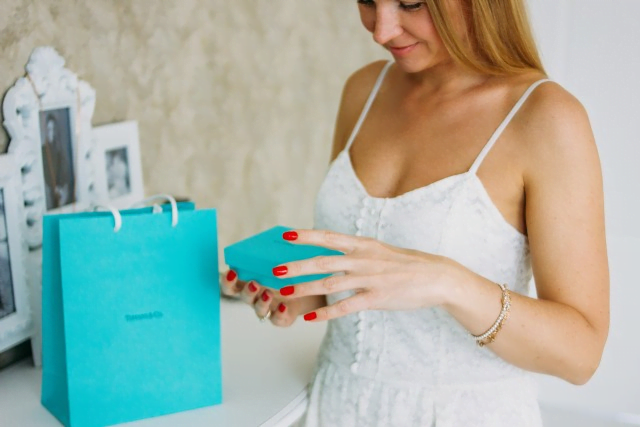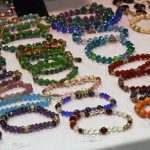Beading patterns for jewelry are a crucial element in the world of jewelry making, providing a roadmap for creating stunning and unique pieces. Whether you are a beginner looking to learn the basics or an experienced jeweler seeking new inspiration, understanding beading patterns is essential for adding depth and detail to your designs.
The history of beading patterns can be traced back centuries, with different cultures and traditions incorporating intricate patterns into their jewelry pieces. From Native American beadwork to Victorian-era beading styles, each pattern tells a story and adds a personal touch to the jewelry piece it adorns.
Exploring the various types of beading patterns opens up a world of creative possibilities, from geometric shapes to floral motifs and everything in between. By understanding the different styles available, jewelry makers can choose patterns that best suit their aesthetic preferences and design vision. Whether you prefer classic elegance or bohemian flair, there is a beading pattern out there for you to experiment with.
History of Beading Patterns
The history of beading patterns in jewelry design dates back centuries, with evidence of intricate beadwork found in ancient civilizations around the world. From African tribes to Native American cultures, beads have played a significant role in adornment and cultural expression. The use of beading patterns in jewelry not only served decorative purposes but also held symbolic meanings, representing status, spirituality, and storytelling.
One fascinating aspect of the history of beading patterns is how these designs have evolved over time. Initially created using natural materials like shells, seeds, and stones, beading patterns transitioned to include glass beads brought by European traders. As techniques advanced and trade expanded, beaders incorporated new materials and styles into their designs, resulting in a rich tapestry of patterns that reflect diverse influences from different regions.
In addition to their cultural significance, historical beading patterns also provide a valuable resource for contemporary jewelry makers. By studying traditional techniques and motifs used in past designs, artisans can draw inspiration for creating their own unique pieces. Whether replicating vintage patterns or putting a modern twist on timeless classics, incorporating elements from the rich history of beading patterns adds depth and meaning to jewelry creations.
| Information | Data |
|---|---|
| History of Beading Patterns | Dates back centuries |
| Materials Used | Natural materials like shells, seeds, stones |
| Influences | Diverse influences from different regions |
Types of Beading Patterns
Beading patterns play a crucial role in the world of jewelry making, adding intricate details and unique designs to pieces. There are numerous types of beading patterns that jewelry makers can explore to create stunning and personalized pieces. From traditional stitches to modern techniques, the options are endless when it comes to incorporating beading patterns into jewelry design.
To delve into the world of beading patterns for jewelry, here are some popular styles and designs that you can experiment with:
- Peyote Stitch: Also known as gourd stitch, peyote stitch is a versatile technique that creates a smooth and fabric-like texture. It is perfect for creating intricate patterns with delica beads or seed beads.
- Right Angle Weave: This technique involves weaving beads together at right angle bends, creating a structured and geometric design. It is commonly used for creating embellishments or bezels.
- Spiral Stitch: Spiral stitch creates a fluid and flowing design, making it ideal for creating ropes or strands of beads. It can be adapted to create simple or complex patterns depending on the size and type of beads used.
Experimenting with different types of beading patterns can help jewelry makers discover their unique style and artistic expression. Whether you prefer traditional stitches or modern techniques, there is no limit to the creativity that can be achieved through beading patterns in jewelry design. Embark on your own creative journey by exploring new styles and designs to elevate your jewelry creations using beading patterns.
Materials Needed
Creating beautiful beaded jewelry requires the right materials to bring your vision to life. Whether you are a beginner or experienced jewelry maker, having the essential materials on hand is crucial for successful beading patterns for jewelry projects. Here is a list of some basic materials you will need to get started on your beading journey:
- Beads: The star of any beading project, beads come in various shapes, sizes, colors, and materials. From seed beads to crystals, choose beads that complement your design.
- Thread or Wire: To string your beads together, you will need thread or wire. Beading thread is ideal for smaller seed beads, while wire works well for larger beads and more structured designs.
- Needles: Beading needles are essential tools for weaving and threading beads onto your material of choice. Make sure to have a few sizes on hand to accommodate different bead sizes.
- Clasps and Findings: These components are necessary for finishing off your jewelry piece. Clasps come in various styles like lobster clasps or magnetic clasps, while findings include jump rings and crimp beads.
Once you have gathered these basic materials, you can start creating intricate beading patterns for jewelry that showcase your unique style and creativity.
Additional Materials
In addition to the essential materials mentioned above, there are some additional tools and supplies that can enhance your beading experience:
- Beading Mat: A soft surface to work on that prevents beads from rolling away.
- Bead Tray: A shallow container with sections to organize different bead types.
- Pliers: To manipulate wire, open/close jump rings, and secure findings.
- Scissors: For cutting thread or wire to size.
Having these additional materials at your disposal will make the process of creating beading patterns for jewelry smoother and more enjoyable. With the right tools in hand, you can let your creativity shine through in every piece you make.
Step-by-Step Guide
The art of creating beading patterns for jewelry is a captivating and intricate process that allows designers to express their creativity and style. To begin creating your own unique beading patterns, it’s essential to gather all the necessary materials. Some common materials needed include beads of various shapes and sizes, beading thread or wire, clasps, jump rings, and beading needles. It’s important to choose high-quality materials to ensure the durability and longevity of your jewelry pieces.
Once you have gathered your materials, it’s time to start designing your beading patterns for jewelry. Begin by selecting a focal point for your design, such as a focal bead or pendant, and then choose complementary beads to create a cohesive look. Consider the color scheme, texture, and shape of the beads to achieve the desired aesthetic. Experiment with different combinations until you find a pattern that speaks to you.
As you start stringing your beads onto the beading thread or wire, pay close attention to the sequence and spacing of the beads to create symmetry and balance in your design. Use techniques such as peyote stitch, herringbone stitch, or right-angle weave to add dimension and complexity to your beading patterns.
Don’t be afraid to try new techniques and experiment with different bead sizes and shapes to push the boundaries of traditional designs. With practice and dedication, you can master the art of creating stunning beading patterns for jewelry that reflect your unique style and personality.
| Materials Needed | Types of Beading Patterns |
|---|---|
| Beads (various shapes and sizes) | Peyote stitch |
| Beading thread or wire | Herringbone stitch |
| Clasps | Right-angle weave |
Tips and Tricks
Choosing the Right Beads
When it comes to creating stunning beading patterns for jewelry, one of the most important aspects is choosing the right beads. Different types of beads like seed beads, glass beads, crystal beads, and gemstone beads can add unique textures and colors to your designs. Experimenting with different sizes, shapes, and finishes can help you achieve a truly one-of-a-kind look for your jewelry pieces.
Practice Patience and Precision
Creating intricate beading patterns requires patience and precision. Taking your time to carefully thread each bead and following the pattern accurately can make a huge difference in the final outcome of your jewelry piece. It’s crucial to pay attention to detail and maintain consistency throughout the beading process to ensure a polished and professional-looking result.
Experimenting With Techniques
Don’t be afraid to step out of your comfort zone and experiment with different beading techniques when creating jewelry patterns. Incorporating techniques like peyote stitch, brick stitch, or herringbone weave can add interesting textures and dimensions to your designs. By exploring new techniques and pushing creative boundaries, you can elevate your jewelry-making skills and create truly unique pieces that stand out.
Inspiration Gallery
The use of beading patterns in jewelry making can elevate a piece from simple to stunning. For those looking to draw inspiration for their own creations, exploring different styles and designs can open up a world of possibilities. Whether you are a beginner or an experienced jewelry maker, the intricacy and beauty of beading patterns can add a unique touch to your projects.
Nature-Inspired Patterns
One popular category of beading patterns for jewelry is nature-inspired designs. From delicate flowers to intricate leaves, these patterns mimic the beauty of the natural world. Incorporating earth tones and organic shapes into your jewelry pieces can create a harmonious and timeless look that is perfect for any occasion.
Geometric Patterns
For those who prefer clean lines and modern aesthetics, geometric patterns in jewelry can be a great choice. By using beads in different shapes and sizes, you can create eye-catching designs that play with symmetry and balance. From minimalist necklaces to statement earrings, geometric patterns add a bold and contemporary edge to any outfit.
Cultural Influences
Drawing inspiration from different cultures around the world can also lead to unique and striking beading patterns in jewelry. Whether it’s intricate tribal motifs or vibrant ethnic prints, incorporating these influences into your designs can create pieces that tell a story. By mixing traditional elements with modern techniques, you can create jewelry that is both visually captivating and culturally rich.
Conclusion
In conclusion, beading patterns play a crucial role in the art of jewelry making, adding intricate details and unique designs to pieces that make them stand out. By tracing the history of beading patterns, we understand the cultural significance and evolution of this craft throughout time. Exploring the different types of beading patterns available allows us to appreciate the endless possibilities and creativity that can be achieved in jewelry design.
As we delve into the materials needed and step-by-step guide for creating beading patterns for jewelry, it becomes clear that patience, precision, and attention to detail are key factors in achieving stunning results. Whether you are a beginner or an experienced jewelry maker, there are always new tips and tricks to learn to enhance your skills and create even more beautiful pieces.
In this journey through beading patterns for jewelry, we hope that our readers have found inspiration from the stunning examples showcased in our gallery. We encourage everyone to experiment with different styles, colors, and techniques to create their own unique creations. Remember, the beauty of beading patterns lies in the endless possibilities they offer – so don’t be afraid to let your creativity shine through in your jewelry designs.
Frequently Asked Questions
What Is the App That Makes Bead Patterns?
There are several apps available that allow you to create bead patterns, but one popular choice is Bead Studio. This app provides a user-friendly interface where you can design intricate patterns for various projects like jewelry, accessories, or even home decor items.
Which Beads Are Best for Jewelry Making?
When it comes to choosing beads for jewelry making, there are various options depending on the style and look you want to achieve. Glass beads like seed beads or Czech glass beads offer versatility and come in a wide range of colors and finishes.
Gemstone beads add a touch of elegance and natural beauty to your pieces, while metal beads can provide a more modern or edgy look.
How Do I Turn a Picture Into a Beading Pattern?
Transforming a picture into a beading pattern requires a bit of digital know-how but can easily be done with the help of specialized software like BeadTool. First, choose a clear image with defined colors and outlines.
Then, upload the picture to the software and adjust settings like bead size and color palette to generate a corresponding beading pattern based on the image selected.

Welcome to my jewelry blog! My name is Sarah and I am the owner of this blog.
I love making jewelry and sharing my creations with others.
So whether you’re someone who loves wearing jewelry yourself or simply enjoys learning about it, be sure to check out my blog for insightful posts on everything related to this exciting topic!





